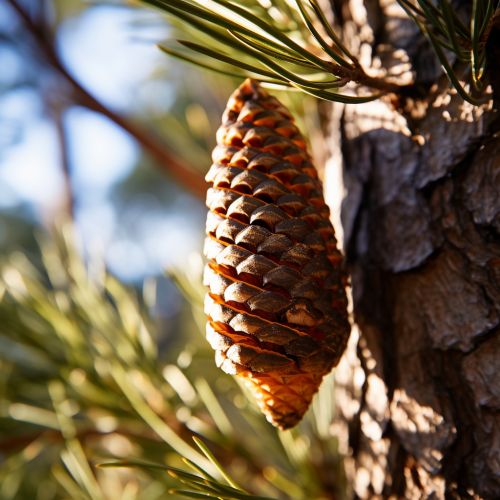Serotiny
Introduction
Serotiny is a term used in ecology to describe a trait of certain plant species where the release of seeds is delayed and occurs in response to an environmental trigger, typically fire. This adaptation is particularly prevalent in fire-prone ecosystems and is a key factor in plant survival and regeneration after fire events.
Overview
Serotiny is a form of dormancy where seeds remain within the parent plant for extended periods. This trait is observed in a variety of plant species across different ecosystems, but is most commonly associated with plants in fire-prone environments. The seeds are typically enclosed in a hard, protective structure known as a serotinous cone or pod, which only opens to release the seeds following exposure to a specific environmental trigger, such as the heat from a fire.


Ecological Significance
The ecological significance of serotiny lies in its role in plant regeneration following disturbances such as fire. By delaying seed release until after a fire event, serotinous plants ensure that their seeds are dispersed onto a nutrient-rich seedbed, free from competition with other plants. This increases the chances of successful seed germination and plant establishment.
Serotiny and Fire
In fire-prone ecosystems, serotiny is a key adaptation for survival. The heat of a fire triggers the opening of the serotinous cones or pods, releasing the seeds onto the freshly burnt ground. This timing is crucial as it allows the seeds to take advantage of the nutrient-rich ash bed and the absence of competition, thereby increasing their chances of successful germination and growth.
Serotinous Species
A variety of plant species exhibit serotiny, many of which are found in fire-prone ecosystems. These include several species of pine, such as the lodgepole pine (Pinus contorta) and the jack pine (Pinus banksiana), as well as some species of eucalyptus, banksia, and hakea.
Evolution of Serotiny
The evolution of serotiny is thought to be a response to environments where fire is a regular occurrence. Over time, plants in these environments have evolved this trait as a survival strategy, allowing them to regenerate effectively after fire events.
Serotiny and Climate Change
With the predicted increase in fire frequency and intensity due to climate change, the role of serotiny in plant survival and regeneration is likely to become even more important. However, changes in fire regimes may also pose challenges for serotinous species, particularly if fires occur too frequently for plants to reach reproductive maturity and produce new seeds.
